Celebrating the Cairngorms
Preparing the final reprint for my 2005 Cairngorms guidebook [800 words 4 min
Today I’m compiling updates for the final reprint of my ‘Walking the Cairngorms’ – published in 2005 it’s gone through three editions, and sold perhaps 15,000 copies. Now it’s time for a new and younger author to take over. Or possibly two of them: the book’s likely to be divided into separate North and South ones.
I took the book on, not because I had an intimate knowledge of the Cairngorms – but because I didn’t. “If you want to find out about something, write a book about it.” (Which is a quote from somebody1.) By the end of two years’ intensive work, sleeping in the passenger seat of the VW Polo, rising at daybreak, and staying up there until sundown, I knew the Cairngorms pretty well…
In a spirit of nostalgia, I reproduce the book’s original Introduction, along with some of my favourite photos.2
Tucked away at the eastern, Aberdeenshire edge of everything, the Cairngorms3 are Britain’s biggest hills – above the 900m mark for 30km, if you discount a couple of glacier-gouged gaps.4 Here are 18 Munros (3000-footers, as listed by Sir Hugh Munro in 1891) linked by a high granite plateau that’s unique in these islands.
So it may seem odd that I should be writing the guidebook just as much about the low places of this high ground.
The first time I walked eastwards out of Kincraig and along the River Spey, I wasn’t expecting to enjoy it. I was tired, I had very sore feet, I was carrying 15kg, and I’d just spent five days coming across the tops of some of the finest mountains in western Scotland.
But my bad feet – and even the wonders of the high-level west – were knocked out by the beauty of the birch trees. The path switch-backed above the river, sometimes just glimpsing it between the branches, sometimes looking across its wide brightness to miles and miles of forest and the dun-coloured hump of Braeriach.
When the following dawn brought the sound of birches beating in a gale, I abandoned my plateau ambitions. Instead I walked for a morning through the pine and juniper of Rothiemurchus. Between the wet tree trunks, lochans were thrashed white by the wind; the grey-black cones of Eilrig and Lurcher’s Crag came and went through the moving boughs; the miles of forest crashed and sighed like the sea.
At lunchtime I emerged through the cattle-thieves’ pass of Ryvoan, beside the green lochan. The weather was still not right for the heights, and this was confirmed when a man came down off Bynack More, bashed against a boulder by the wind and with a broken rib. So I went up to the mid-level, the 750m mark. This is where the heather gets shorter, and granite gravel shows between the stems; and where, from behind the hump of a moor, the great slabbed crags around Loch Avon start to appear.
Creag Mhor is seldom walked on: at 895m it’s too low to be counted by the Munro-bagging fraternity. Accordingly, Creag Mhor is pathless, bleak as the ice left it 10,000 years ago. Even so, the going is easy, over low tundra vegetation of crowberry and bearberry, cropped by the ptarmigan and swooped over by the lonely piping plover. On the bare rock top I leant into the wind, gazing into the fastness hollow of Loch Avon. Then I descended to Fords of Avon, where the lowly iron shelter stood under a centimetre or two of fresh, wet snow.
Low-level is lovely, and not just on a nasty day. Mid-level is unwalked but very walkable. And yet, as you wander that ancient pinewood or along the banks of the Dee or the Spey, beyond the branches are the snow-topped shapes of Braeriach and Beinn a’ Bhuird. As you emerge from the juniper and birch onto one of those mid-height hills, above are the really high ones, grey and purple, topped off with a row of granite pimples.5 Pinewoods are fine; mighty rivers make great walks; but above all those great walks is the Great Moss. Up there you wander a bleak landscape of stones with a gently winding stream, a clump of moss campion showing pink among the pebbles. It’s a land that comes from 10,000 years ago, and from somewhere else altogether – somewhere up in the Arctic. Then all of a sudden a top edge of crag rises behind some boulders; and you’re high above the Lairig Ghru, looking into a steep-sided scene of wet granite slabs, black peat, and a silver river.
To reach the heart of the Cairngorms you need high ambitions, as well as pretty strong legs. At the centre of everything lies Loch Avon, its waters level with many of England’s mountaintops; but above it, the slopes rise in boulder and bare rock for another 400m. Great chunks have cracked off the crags to lie around the loch shore, and between the rocks are patches of bright bilberry, and little grassy places for the tent.
Low Cairngorms give some of Scotland’s loveliest walking. Mid-height hills ask more, and offer in return a level of adventure. And the high Cairngorms can call on all your strength and skill. High or low, Caledonian forest or sub-arctic plateau, the Gorms are British mountain country as grand as it gets.
It might have been physicist Richard Feynmann who said that. Then again, it might not.
Book extract published here courtesy of Cicerone Press: the final reprint will be available Spring 2026
The guidebook covers what was to become the original area of the ‘Cairngorms National Park’: the big granite hills between Speyside and Deeside, together withe the similarly distinctive Lochnagar. The national park has since expanded into the schist to include the Angus Glens and the dreary A9 hills. Which aren’t really Cairngorms at all.
Ben Nevis, on one of the western fjords, is our highest: but the 2nd, 3rd, 4th and 5th highest are all in the Cairngorms.
My previous post about the tors, and how come they stood here right through the Ice Age.





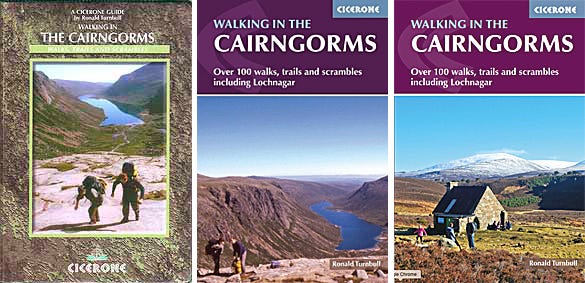
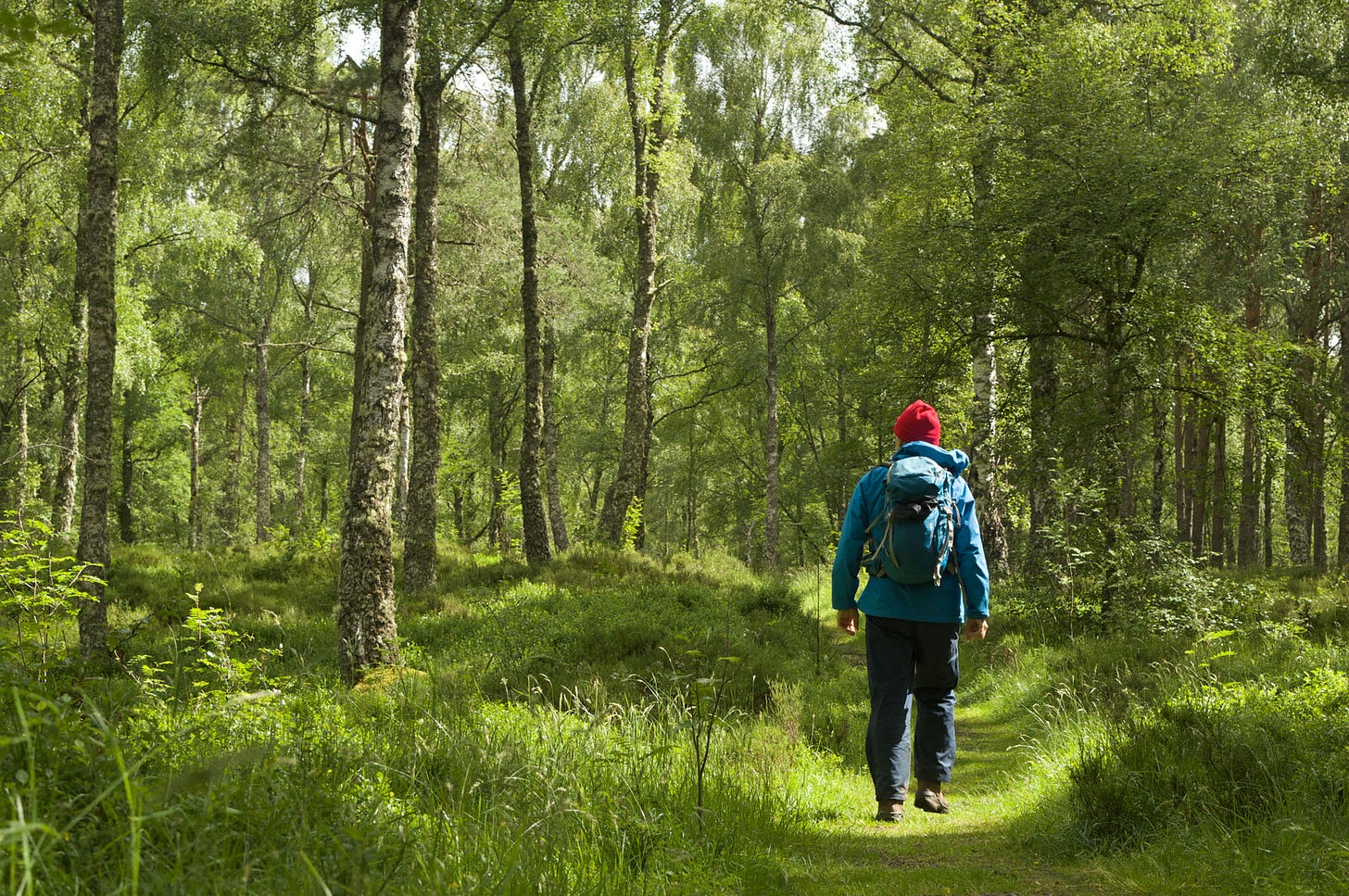
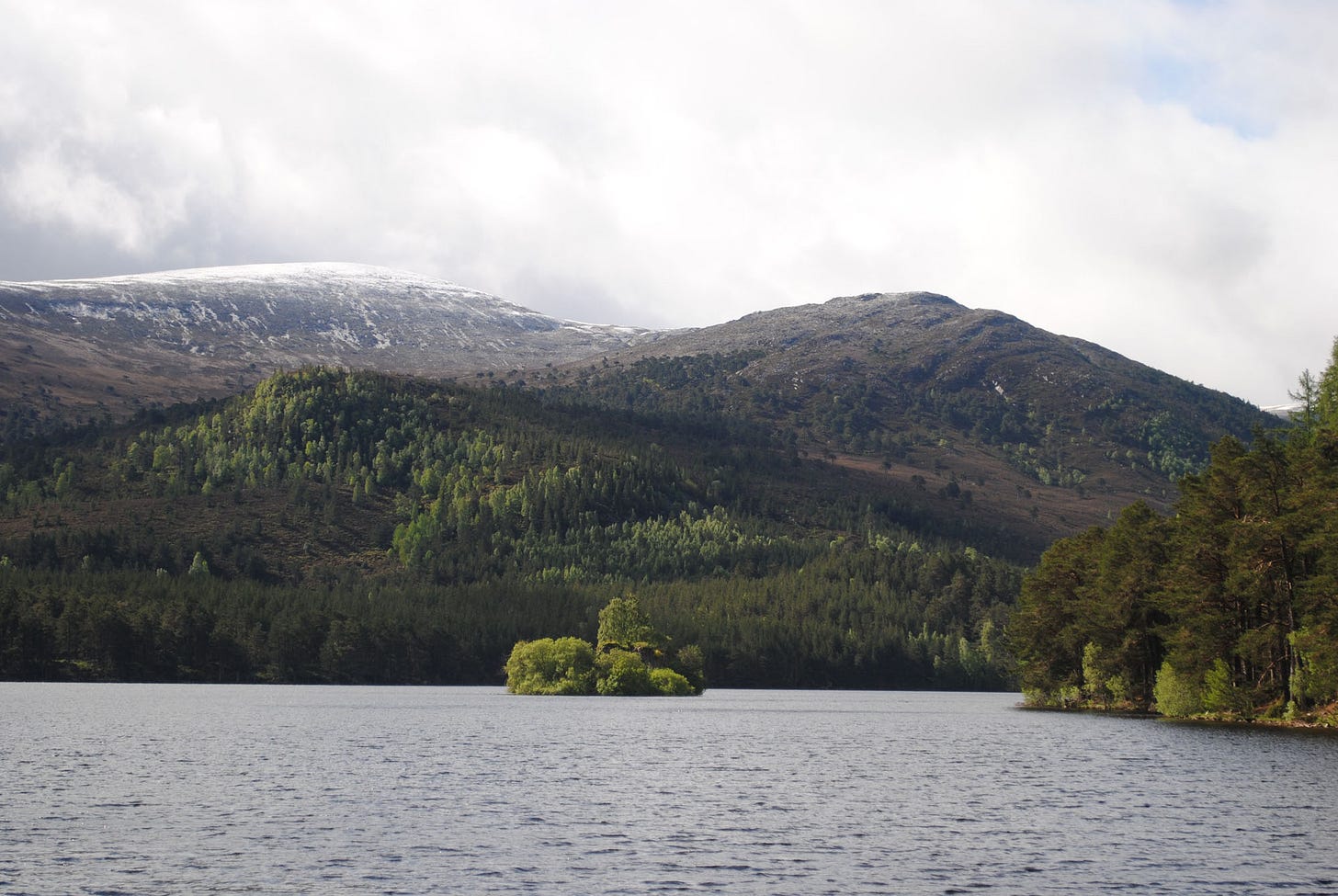
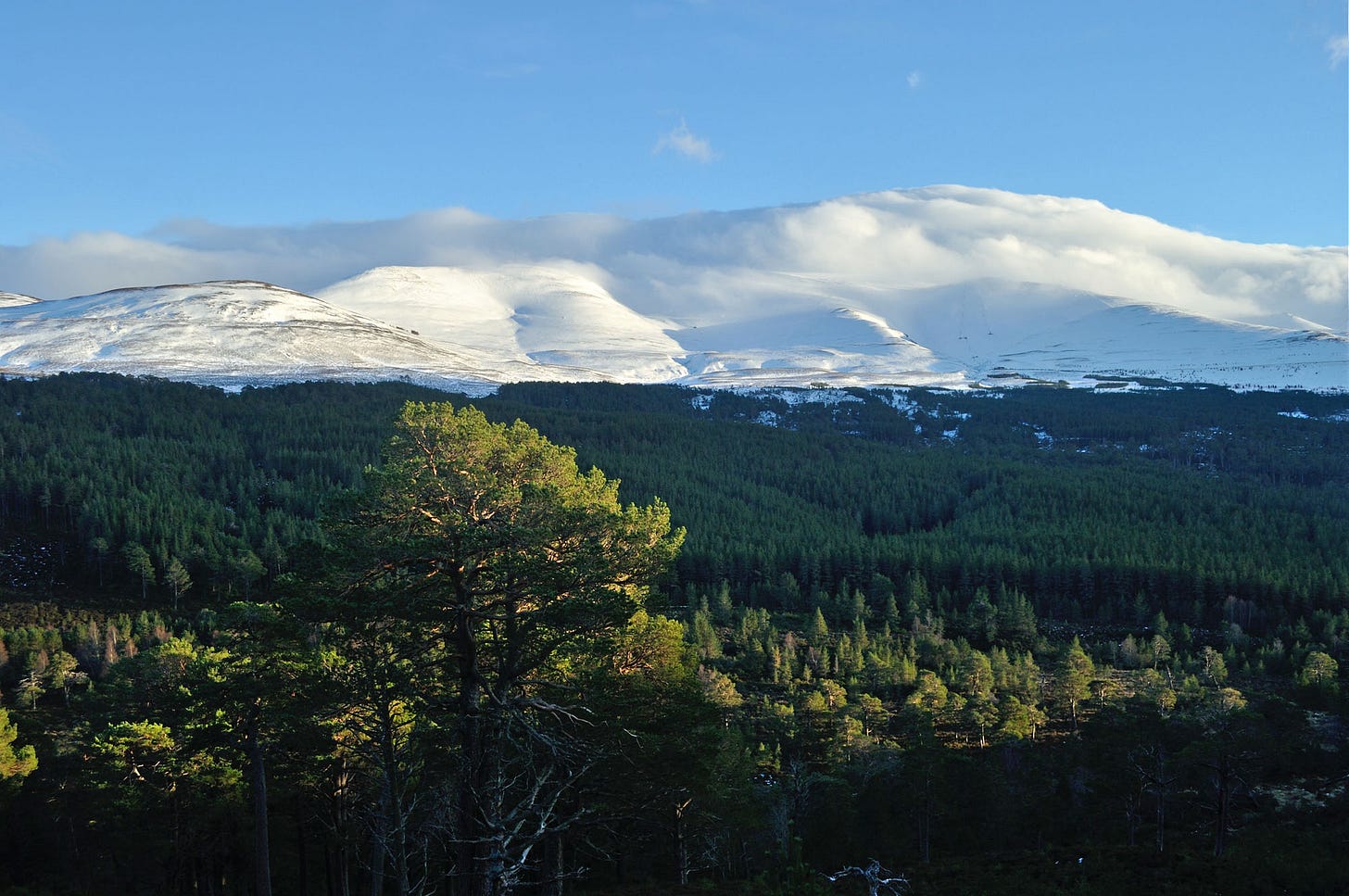
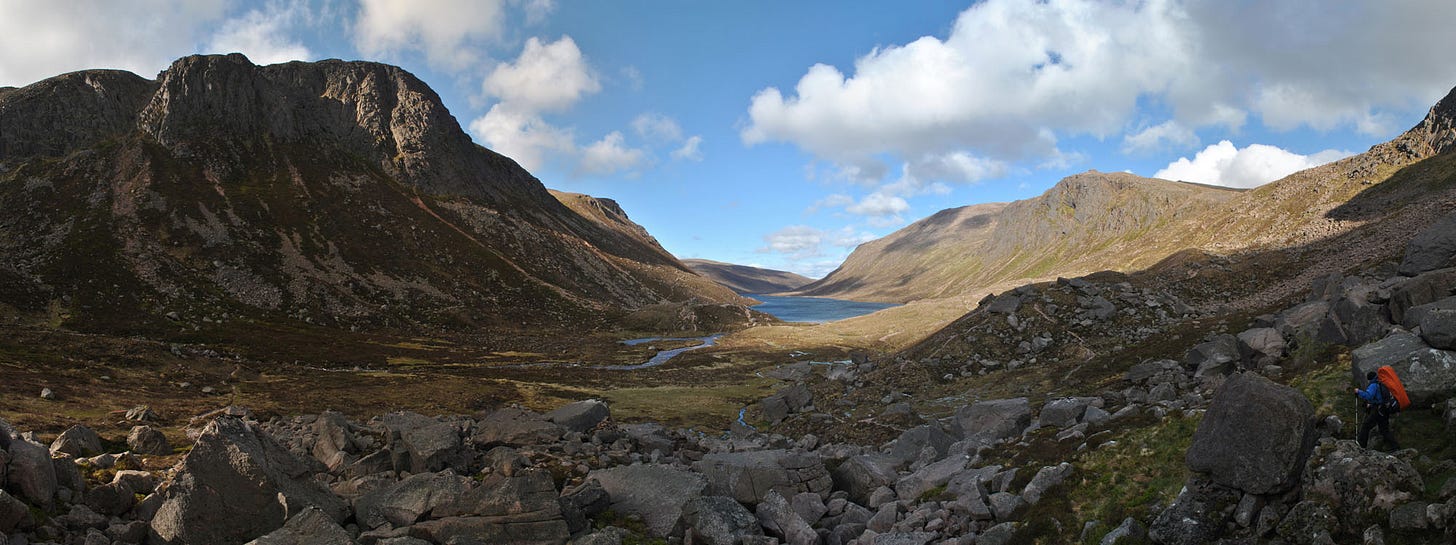
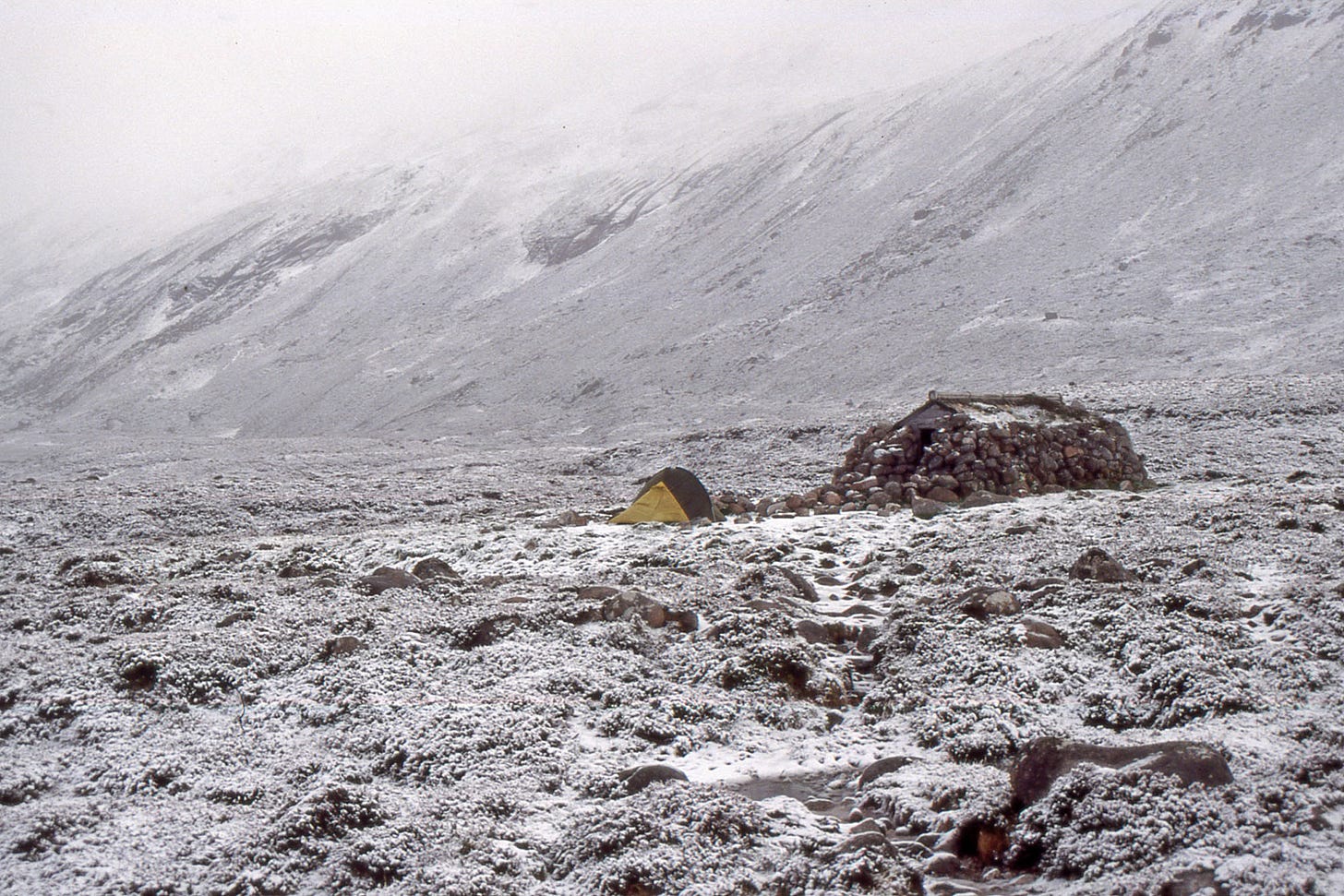

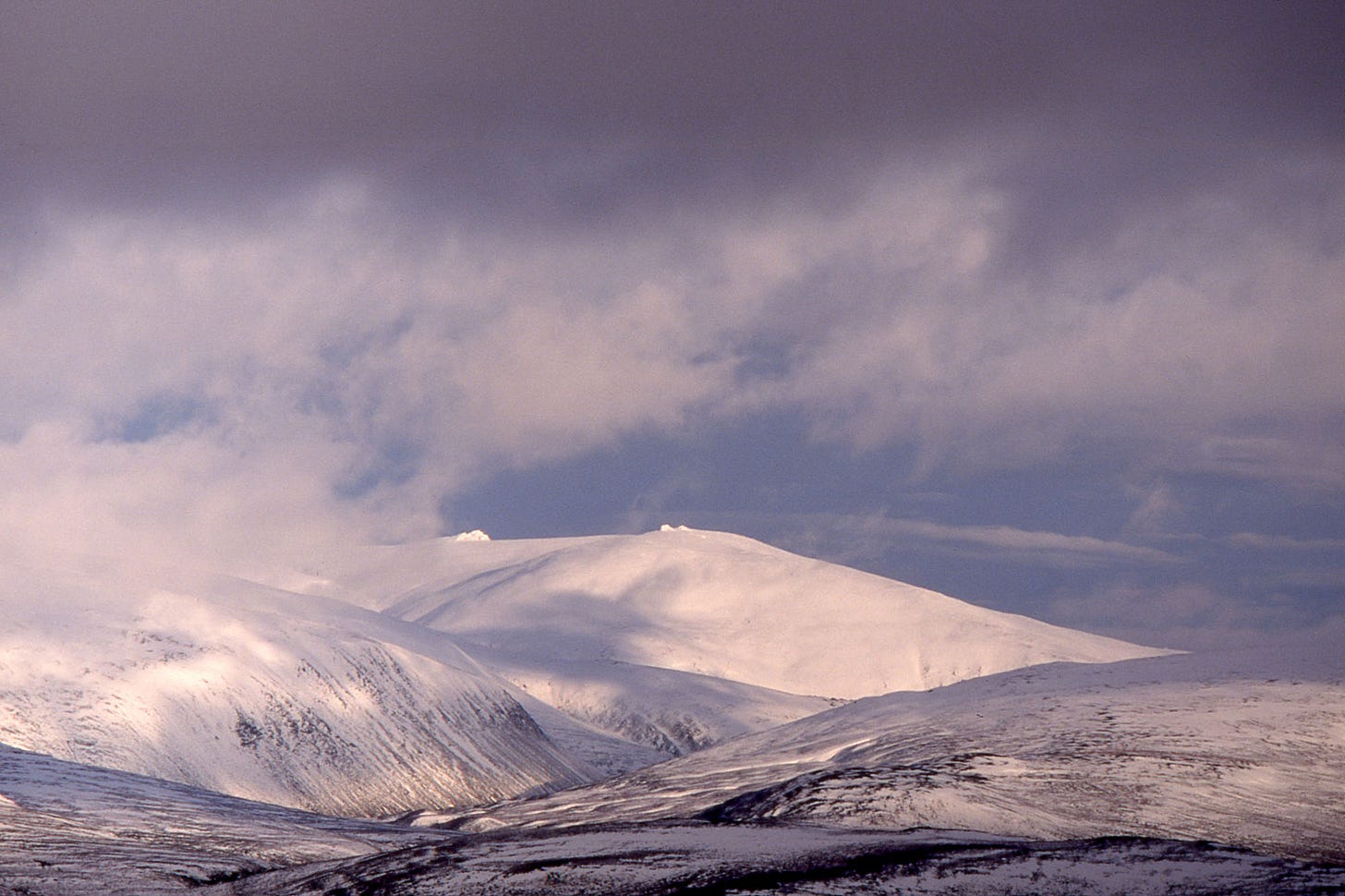
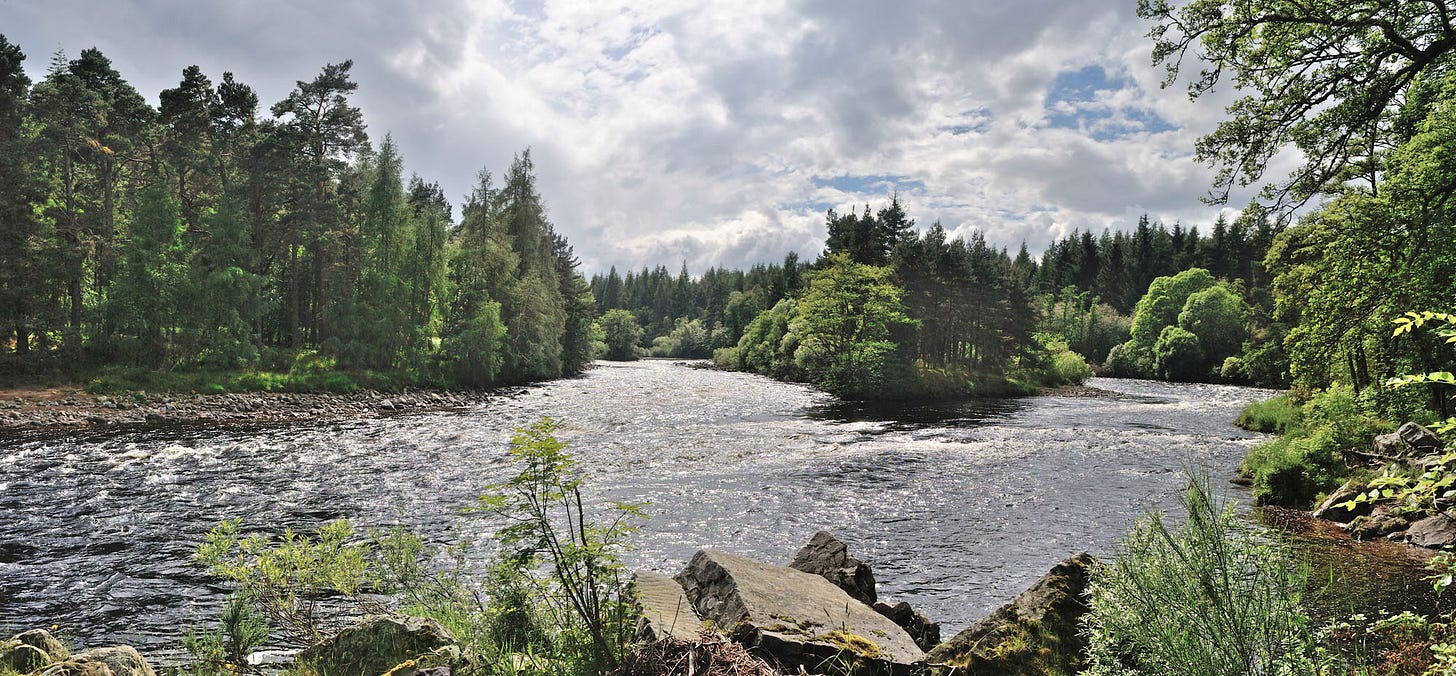
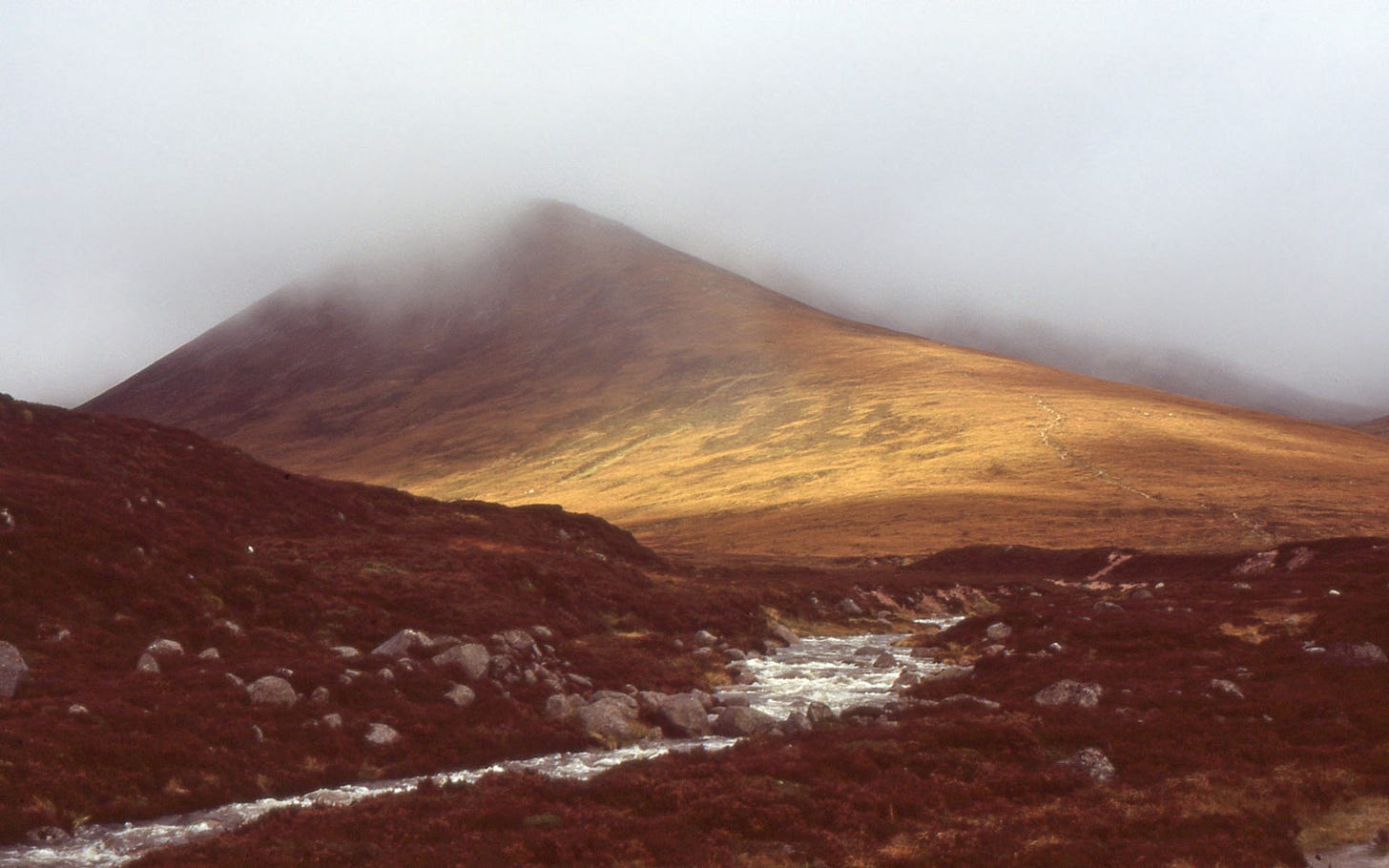
Ronald, I'm not sure if I ever told you this, but the first edition of your Cairngorms guide was a trusted companion for me in my early years of wandering about in Scotland. I'm not sure where it ended up, but by the time I left the Clachaig it was well-thumbed and had crinkly pages from a number of soakings on the hill. A number of my books went missing in the move back down south. It's probably still kicking around in the Boots Bar to this day...
Excellent!